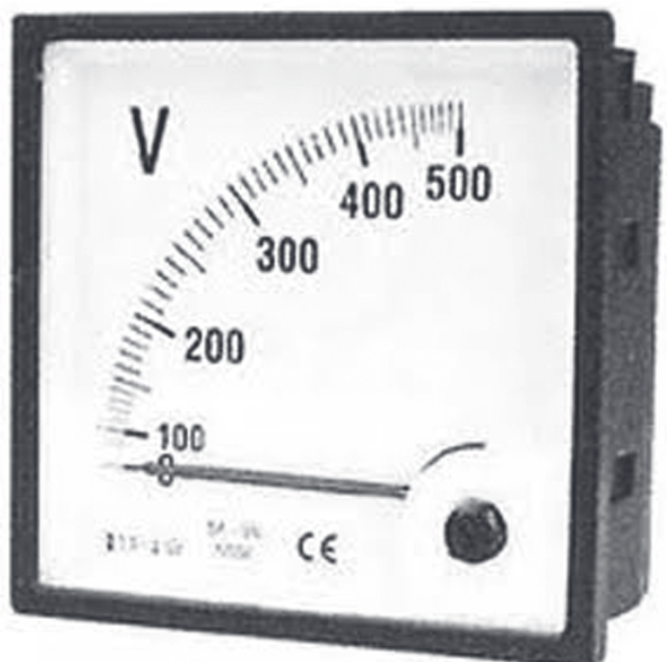In this topic, you study the difference between ammeters and voltmeters.
Ammeters and voltmeters may be obtained by connecting a “low value of resistance in parallel” or a “high value of resistance in series” respectively with a galvanometer. The value Of resistance however will depend upon the “range of measurement” required. Therefore there is no basic difference in ammeter and voltmeter. Both work on the same principle (except electrostatic voltmeter). The comparison between the two instruments as
Ammeters
- The ammeter has very low resistance (due to an external resistance connected in parallel)
- The ammeter is connected in series with the circuit and measures current
- The ammeter usually carries full current flowing in the circuit.
- Ammeter is a current operated device
- A galvanometer can be converted into ammeter by connecting a small resistance in parallel with the meter.

Fig. 1. Pictorial View of Ammeter.
Voltmeters
- Voltmeter has a high resistance (due to an external resistance connected in series).
- The voltmeter is connected across (parallel) the circuit and measures voltage across the circuit.
- The voltmeter carries current proportional to the voltage across the circuit
- Voltmeter is also a current operated device
- A galvanometer can be converted into voltmeter by connecting a high resistance in series with the meter.

Fig. 2. Pictorial View Of Voltmeter.